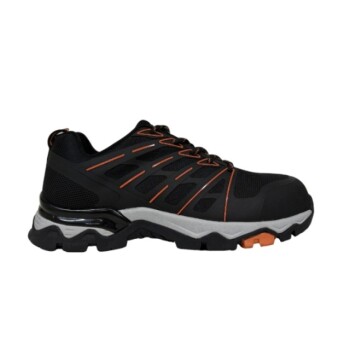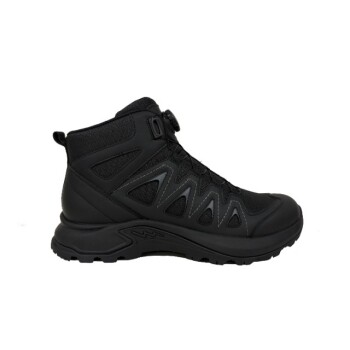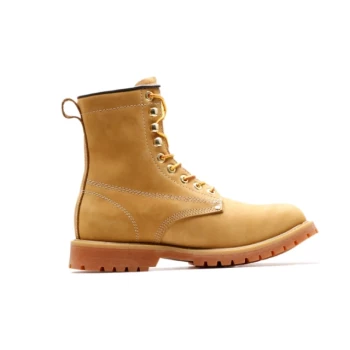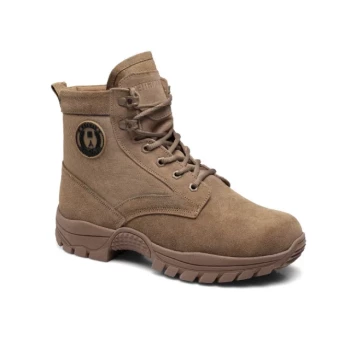The fundamental difference between EN ISO 20345 and EN ISO 20347 is the mandatory level of impact protection for the toes. EN ISO 20345 defines safety footwear and requires a protective toe cap capable of withstanding 200 joules of impact, making it essential for environments with a risk of crushing injuries. In contrast, EN ISO 20347 is the standard for occupational footwear, which does not require a protective toe cap and is designed for lower-risk workplaces where other hazards like slips and static are the primary concern.
Your choice is not about which standard is "better," but about correctly matching the footwear's features to the specific, assessed hazards of your work environment. EN ISO 20345 protects against impact and compression, while EN ISO 20347 prioritizes stability and comfort for less hazardous roles.
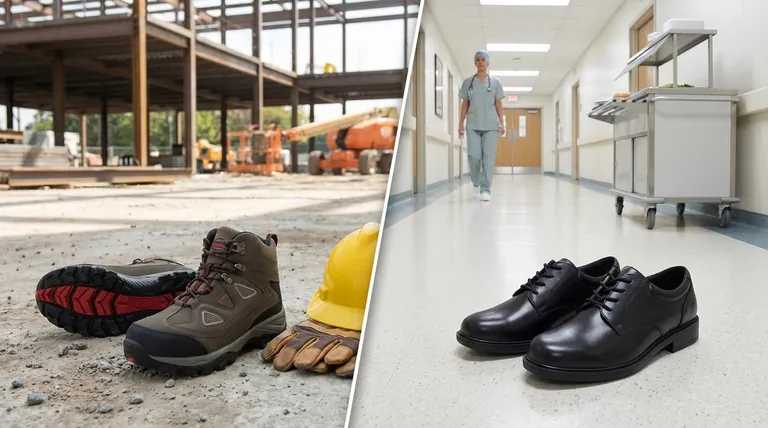
EN ISO 20345: The Standard for Safety Footwear
This standard sets the benchmark for footwear designed to protect the user from serious physical harm. Its core requirement is what distinguishes it from all other standards.
The Mandatory Toe Cap
The defining feature of EN ISO 20345 is the presence of a protective toe cap. This component must be tested to withstand a 200-joule impact. This is the non-negotiable element that legally classifies footwear as "safety" footwear.
Protection Against Severe Risks
Beyond impact resistance, this standard covers footwear designed to guard against significant mechanical or thermal risks. This makes it the default choice for environments where the potential for injury is high.
Common Use Cases
You will find EN ISO 20345 footwear on construction sites, in manufacturing plants, warehouses, and any profession where there is a tangible risk of heavy objects falling or rolling onto the feet.
EN ISO 20347: The Standard for Occupational Footwear
This standard applies to footwear for workplaces where the risk of toe-crushing injuries is negligible, but other safety concerns are present.
No Impact Protection Mandate
Crucially, footwear certified under EN ISO 20347 does not have a protective safety toe cap. Its purpose is to address different, less severe workplace hazards.
Focus on Workplace Stability and Comfort
The primary requirements for this standard focus on features that enhance user safety and well-being over long periods. This includes a minimum level of slip resistance, antistatic properties, and often an energy-absorbing heel to reduce fatigue.
Ideal Work Environments
This footwear is perfectly suited for professions like healthcare, hospitality, cleaning services, and the food industry. The main risks in these roles are typically slippery floors and the physical strain of being on your feet all day.
Understanding the Trade-offs
Choosing the wrong standard has significant consequences for both safety and comfort. Misunderstanding the purpose of each can lead to unnecessary discomfort or, far worse, a preventable injury.
The Cost of Protection
Safety toe caps add weight and rigidity to footwear. While essential for protection, this can reduce flexibility and comfort over a long shift if the high level of protection is not actually required by the job's risk assessment.
The Benefit of Lighter Wear
Occupational footwear under EN ISO 20347 is generally lighter and more flexible. By removing the need for a heavy toe cap, designers can prioritize materials and construction that enhance all-day comfort.
The Danger of Misapplication
Never substitute occupational footwear for safety footwear. The comfort gained by wearing an EN ISO 20347 shoe in an environment that demands EN ISO 20345 protection creates a severe and unacceptable risk of serious personal injury.
Making the Right Choice for Your Environment
Your decision must be driven by a clear understanding of the risks present in your specific workplace.
- If your primary risk is falling objects or compression: You must choose footwear certified to EN ISO 20345 to ensure adequate toe protection.
- If your primary risks are slippery floors and long hours of standing or walking: Footwear certified to EN ISO 20347 is the appropriate and more comfortable choice.
- If you are ever unsure about the risks: Always default to the higher level of protection offered by EN ISO 20345 until a formal risk assessment proves it is unnecessary.
Selecting the correct standard is a foundational step in ensuring both personal safety and regulatory compliance.
Summary Table:
| Feature | EN ISO 20345 (Safety Footwear) | EN ISO 20347 (Occupational Footwear) |
|---|---|---|
| Toe Cap Protection | Mandatory (200J impact) | Not Required |
| Primary Hazard | Impact, Compression | Slips, Fatigue, Static |
| Ideal For | Construction, Manufacturing | Healthcare, Hospitality, Food Industry |
| Key Benefit | Maximum Injury Protection | Lightweight & All-Day Comfort |
Ensure your team has the correct safety footwear. As a large-scale manufacturer, 3515 produces a comprehensive range of EN ISO 20345 and EN ISO 20347 certified footwear for distributors, brand owners, and bulk clients. Our production capabilities encompass all types of safety and occupational shoes and boots, ensuring quality, compliance, and comfort. Contact us today for a consultation and get the right footwear for your specific workplace hazards.
Visual Guide
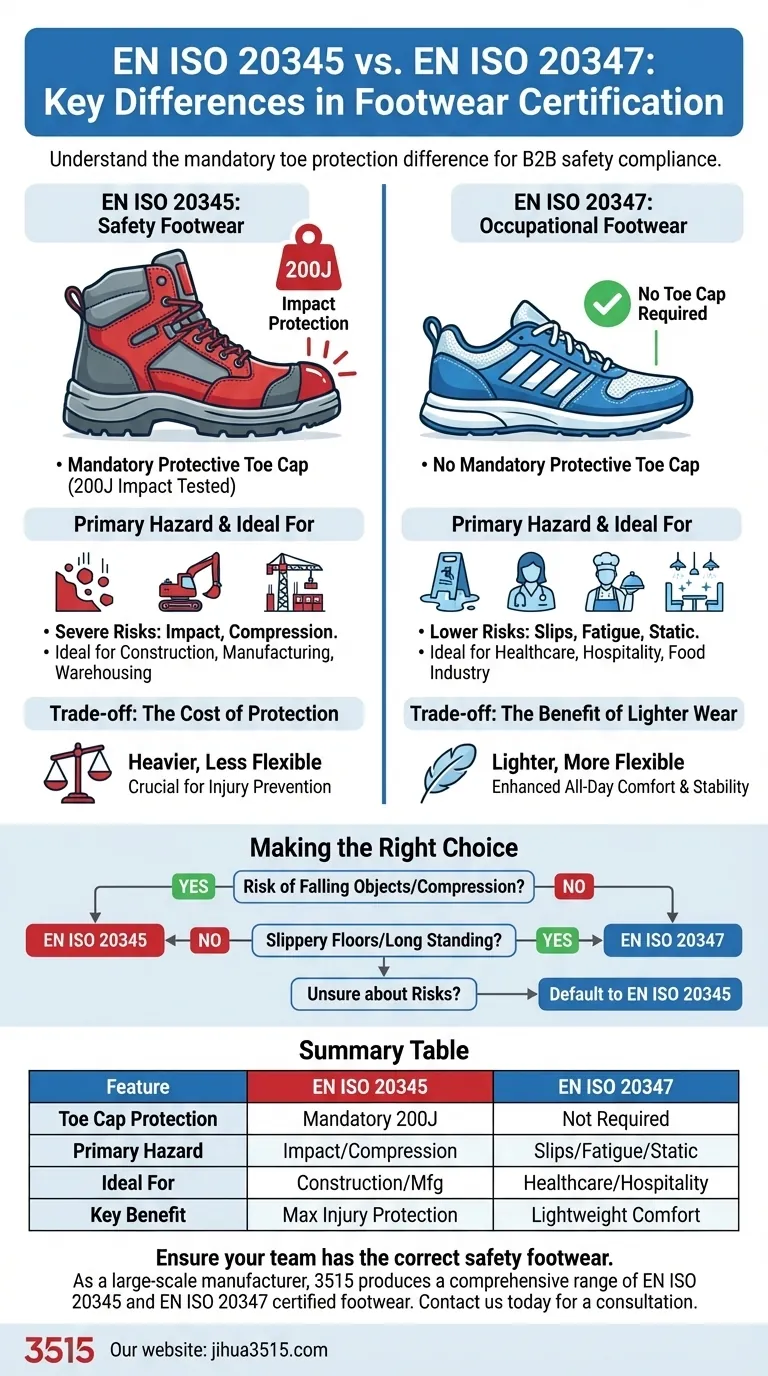
Related Products
- Safety Footwear Wholesale Manufacturer for Custom OEM/ODM Production
- Premium KPU Injection Athletic Style Safety Shoes
- Wholesale Anti-Smash & Puncture-Proof Safety Shoes Custom Manufacturing for Brands
- Premium Grain Leather Safety Boots for Bulk Supply
- Premium Wholesale Wheat Nubuck Safety Boot with Rapid Lacing System
People Also Ask
- What are the cultural perspectives on wearing shoes in the house? A Guide to Home Etiquette & Hygiene
- How do safety shoes contribute to cost savings for companies? A Strategic Investment in Risk and Cost Management
- What are the differences between steel toe, composite toe, and alloy toe Wellington boots? Choose the Right Safety Toe for Your Job
- How long can you wear safety boots? The Lifespan is Determined by Wear, Not Time
- What cultural and environmental considerations are tied to wearing shoes indoors? Balance Hygiene, Tradition, and Foot Health

